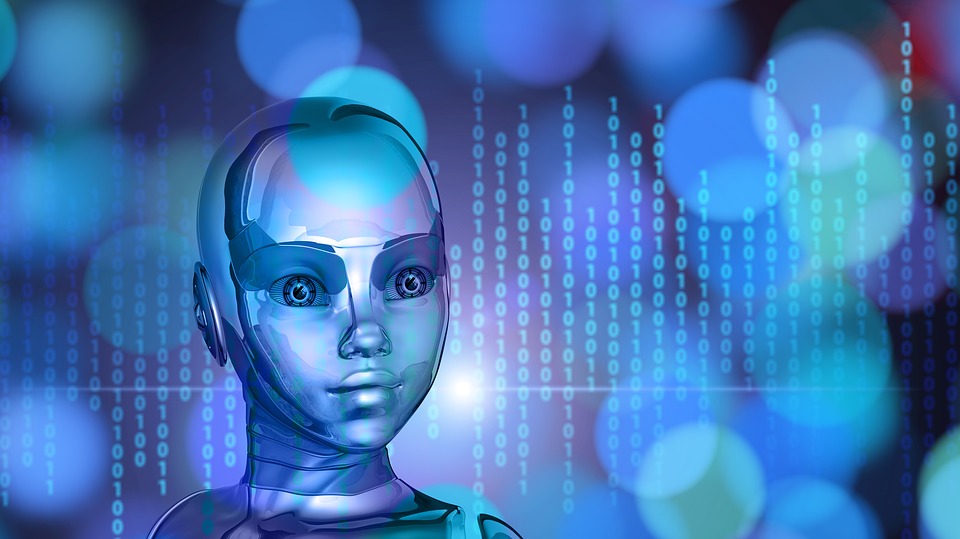
Recently, a lot of Japanese companies are testing robots as their staff. In fact, some are already using them.
Last April, the Mitsukoshi Department Store in Tokyo had Chihira Aiko, a robot receptionist, greeting their shoppers. Last year, Bank of Tokyo-Mitsubishi UFJ started testing Nao, a polyglot robot which can answer basic customer-service questions in 19 languages.
Chihira Aiko, your robot receptionist.
To those familiar with the anime, Bubblegum Crisis Tokyo 2040, these scenarios seem quite familiar. With a fast-changing world we have right now, is there a probability that the main goal for these latest innovations is patterned from anime? Or was it the creators of anime who modelled the situations on real-life?
Bubblegum Crisis Tokyo 2040 and the humanoid robots
The anime Bubblegum Crisis was set in the year 2040, in Megalo, a city developed on the now ruins of Tokyo. The series featured boomers, a line of android workers devised by Genom Corporation. Due to some unidentified circumstances, boomers started functioning way beyond their programmed skills and went ransacking the city. The police were actually no good so a vigilante group, called Knight Sabers, composed of armored female human beings, were formed.
The anime was released in 1998 and ended with 26 episodes on March 31, 1999.
Now, the year is 2016. It is not impossible that in 24 years, Japan will be filled with these humanoids, or robots made to act like humans, just like in Bubblegum Crisis.
But who patterned which from which?
Honda’s Asimo.
One of the most notable and earliest accounts of humanoids in real-life technology is Honda’s Asimo, a two-legged walking robot. It took its first steps in 1986, 12 years before the boomers dominated Japanese television.
Mega Man’s Rush and the robotic pets
In Mega Man, the first game being released in 1987, androids have a slightly different structure than that of the boomers. The robots created by inventors Dr Light and Dr Wily are more of armoured humanoids with superpowers. The inventors initially created the robots to help humans, not only in their daily household jobs but also for industrial work.
Dr Light also created a robot dog named Rush. Debuting in Mega Man 3 in 1992, the third instalment of the famed Capcom video game, the robotic pet can transform itself into a coil, a hoverboard and a submarine to aid Mega Man in all his battles.
The setting of the Mega Man story happened in the year 200X or sometime in the early 21st century.
Paro, your therapeutic robot seal.
If we talk about robotic pets in real-life, one of the earliest accounts was Paro, a robot baby harp seal. The development of Paro, as a form of therapeutic companion for health care facilities, started in 1993. It was a project started by Takanori Shibata at Tokyo’s National Institute of Advanced Industrial Science and Technology, six years after Mega Man has been released. In 2004, Paro was released commercially and has been rated as a Class 2 medical device in the United States for being an aid to dementia.
Sony’s Aibo.
But what could be considered as the most famous robot pet was AIBO (Artificial Intelligence RoBOt), released by Sony 12 years after Mega Man had become a hit. The first model of AIBO, released in 1999, was silver and patterned on the appearance of a beagle. It could not only do the physical movements of a real dog but also reacts on external stimuli, making it act like a living creature.
AIBO had become an integral part of the Japanese pet lovers’ lives that when Sony stopped their repairs for it in 2014, following the cessation of the sale in 2006, owners started having funerals for their “dead” AIBOs.
Nowadays, on the second decade of the 21st century, a lot of pets had now been in the market like Sega’s Yume neko and Takara Tomy’s Furby.
Gundam, Mazinger Z and the giant robots
The mighty robot challenge of America’s MegaBots to the Kurata’s of Japan.
In June 30, 2015, MegaBots, a robot company based in California, U.S.A, challenged the mechas of Kogoro Kurata, a robot artist from Japan.
The Kurata’s acceptance of the challenge.
Five days after, on July 5, 2015, the Kuratas accepted the fight.
According to the video challenge, the fight is supposed to take place one year after. Based on the videos from the official MegaBots Youtube channel, it seems like the Americans are still preparing for it.
Apparently, giant robots are now on the loose. The Kurata mechas were unveiled in 2012, together with the launch of their website. This is 46 years after the release of the anime Tetsujin 28-go, one of the first giant robots in Japanese animation. But the robot here was externally-controlled. The first piloted mecha was Mazinger Z, the anime being released in 1972.
Having seen all of these advancements in technology, maybe it doesn’t matter anymore which copied from which. The more important thing is that robots are being rapidly developed these days. Maybe it won’t be long until the person sitting next to you now is already an android, getting ready to pilot the next giant mecha of the world.





